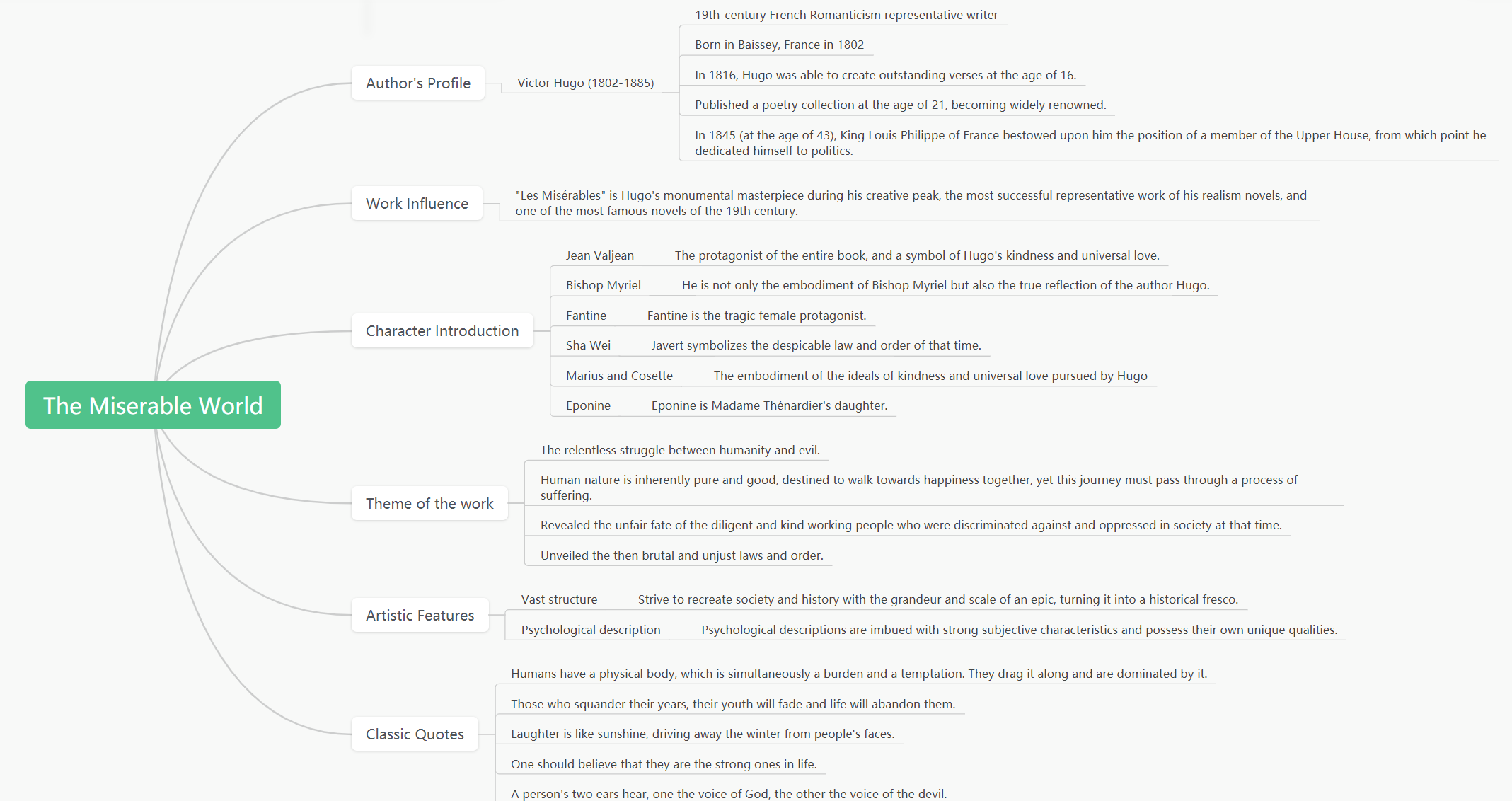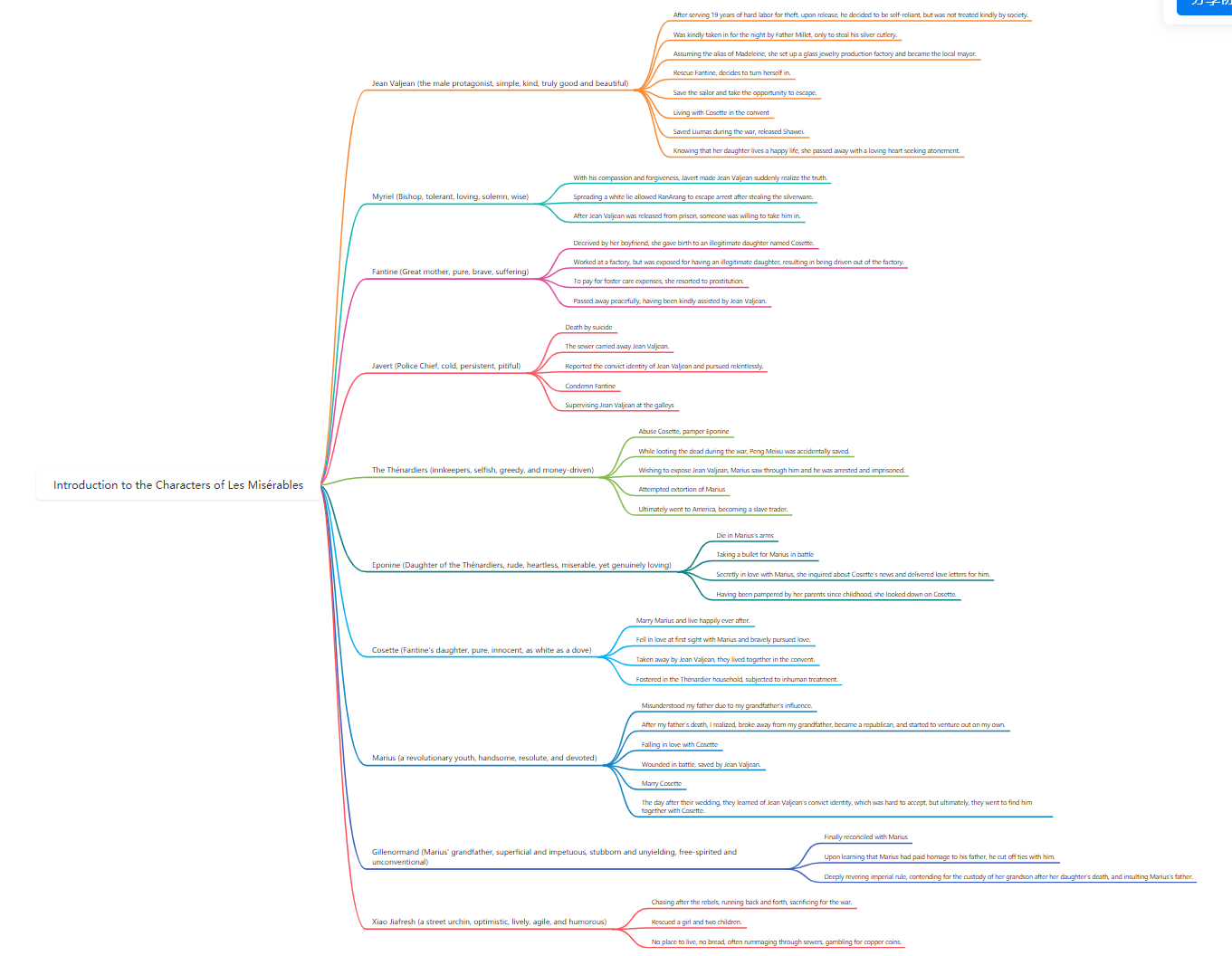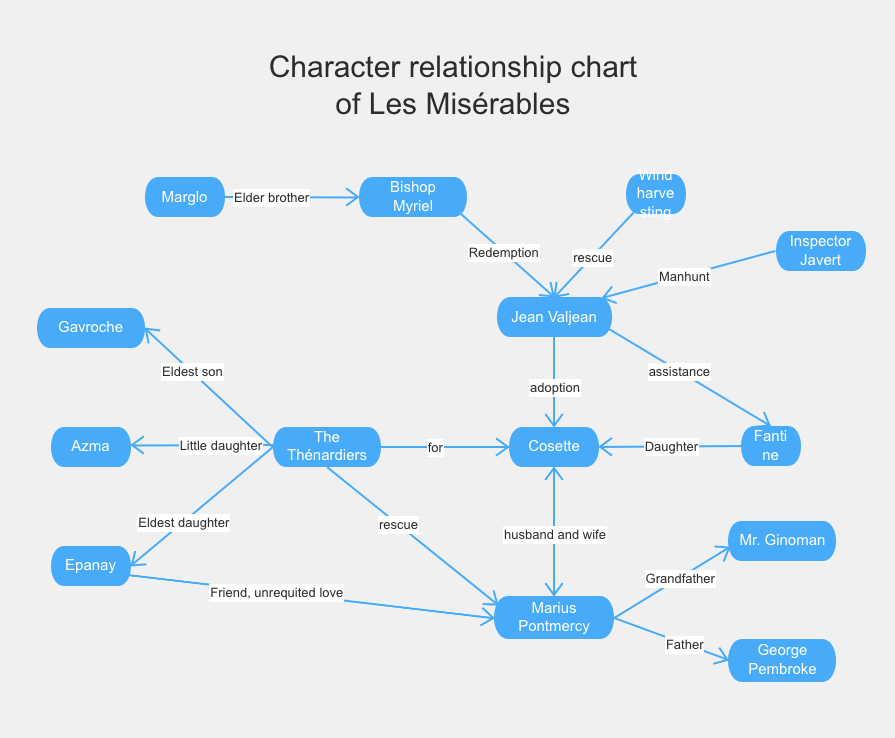

Les Misérables is one of the masterpieces of the famous French writer Victor Hugo, first published in 1862. This novel vividly reflects the turmoil and injustice of French society in the 19th century through the transformation of the hero Jean Valjean from a criminal to a good person, and the stories between him and Fantine, Cosette, Marius and others. Not only are good and evil, love and redemption explored, but themes such as poverty, revolution, law and justice are also addressed. Through this work, Hugo showed his deep call for social reform and human sympathy, and became a classic in the history of world literature.


Victor Hugo (February 26, 1802-May 22, 1885) was one of the most famous French writers, poets and playwrights of the 19th century, and an important representative of the Romantic literary movement. Les Miserables is one of his masterpieces.


Introduction to the author of Les Miserables
Les Miserables is called a classic in the history of literature, and its profound historical background provides rich soil for the development of the story. The story is set in France in the early 19th century, shortly after the French Revolution, and profound changes have taken place in social structure and values.
French society in the early 19th century, especially Paris, became the cultural, political and economic center. The society in this period is full of complexity and uncertainty, and people's lives are deeply affected by social changes. Poverty and social injustice have become widespread phenomena, and many people are struggling in economic difficulties and struggling to survive for a living.


Les Miserables Story Background
Under this social background, the story of Les Miserables begins. Jean Valjean, a prisoner abandoned by society, symbolizes the fate of countless poor families. His life is full of suffering and helplessness, and his story is not only a personal tragedy, but also the epitome of the contradictions among the whole social strata.
The characters in the book have distinct personalities and unique destinies, and their joys, sorrows, joys and sorrows are all vivid in Hugo's works.


Introduction to Les Miserables Characters
Jean Valjean, a prisoner abandoned by society, is a victim of social injustice. His confrontation with police officer Yavel is the most classic villain-hero showdown in Les Miserables. The struggle between them is not only a confrontation between law and crime, but also a profound contest between idealism and realism.
The love clue between Cosette and Marius is one of the most touching emotions in Les Miserables. Cosette, a young and strong girl whose affectionate affection for Marius transcends the boundaries of class and rich and poor, reveals the goodness and sacrifice deep within her heart. Marius, an idealist, has to make a difficult choice between love and idealism in the face of Cosette's innocent love and the call of revolution. The emotional entanglement between them not only warms the whole story, but also shows the great power of human love and faith.
At the same time, the romantic Sir Thebes influenced and shaped the fate of Cosette and Marius with his unique realistic attitude. A complex and multi-faceted character, Sir Thebes is both Cosette's guardian and Marius's mentor and enlighter. His profound insight into society and life makes him an indispensable and important role in Les Miserables, and every decision and action he makes adds drama and depth to the story.


Introduction to the main characters of Les Miserables
In addition to the delicate characterization, the rich storyline and intricate relationship between the characters also greatly enrich the characters, showing a vivid and realistic social group portrait.

Character Relationship Diagram of Les Miserables
With his unique writing style and profound insight, Hugo blended social realism with romanticism to create a world full of human complexity and social reflection. The work not only shows the injustice and class struggle of French society in the 19th century through Jean Valjane's tough life journey and Cosette's kind heart, but also deeply explores the conflict between personal ideals and social reality when depicting characters such as Marius and Alice Bolancy. In addition, its delicate character description and profound social insight make readers immerse themselves in the scene, fall into the fate of the characters, and have a deeper thinking about the complexity of human nature and moral choice.


The artistic achievements of Les Miserables
As a representative work of Victor Hugo, Les Miserables has had a profound influence on world literature and society. Through vivid characterization and profound social criticism, it deeply touched readers at that time and later, and became a classic in 19th century literature. The theme of social justice and humanitarianism in the novel has aroused extensive discussion and stimulated people's concern and reflection on social injustice.


Influence of Les Miserables Works
Through Jean Valjean's tragic experience and struggle, Les Miserables shows all kinds of injustice and dark phenomena in French society at the beginning of 19th century, and also shows the complexity and diversity of human nature. In the face of suffering and setbacks, Jean Valjean always maintained a firm belief and good nature. He proved the beauty and greatness of human nature with his own actions. Although he failed to escape the tragic fate in the end, his spirit stayed in people's hearts forever and became an eternal strength and belief.
I believe that through the study of the above mind map, you have a certain understanding of the character relationship and storyline of Les Miserables. ProcessOn not only provides relevant mind maps, but also a large number of templates for editing. Click to use them now.